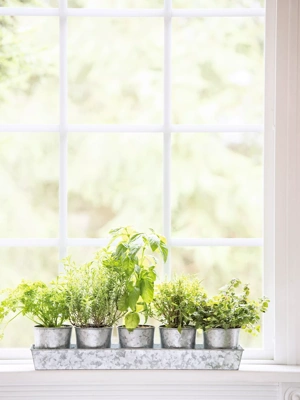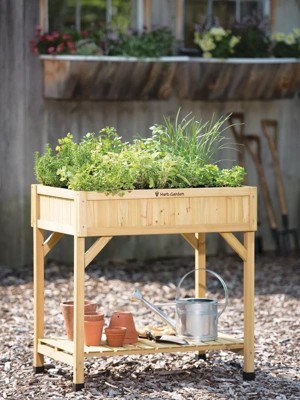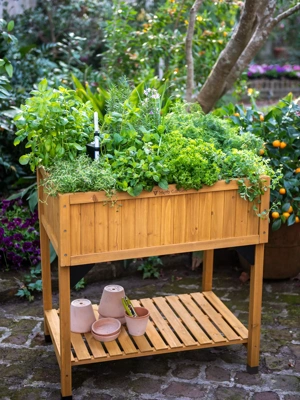Sage

Sage is a perennial plant from the Mediterranean that is hardy in zones 4 (some say zone 5) and warmer. It is not a long-lived plant and needs to be divided every three to four years to keep it vigorous. Sage will get to be 12-24" tall, but its stems tend to be more floppy than upright. The stems become woody with time, and the leaves are semi-evergreen or evergreen in warm climates.
For best results, buy a small sage plant rather than starting it from seed. There are many different varieties and colors of sage, and the seeds do not always produce the plant you expect. If you want to start sage by seed, start the seeds indoors early in the spring, or outdoors a couple of months before last frost.
Grow sage in full sun in average soil. A healthy sage plant requires very good drainage. Raised beds are helpful in that regard. Be sure the soil is loose and fluffy and does not hold excessive amounts of water or the roots will rot. Work in some compost at planting time, but do not add fertilizer to the soil.
All the colors and varieties of sage are edible, and many are attractive enough to grow in the flower garden. Sage can also be grown in a pot or container. Just remember that if you live in zones 4 or 5 and plan to leave the pot outdoors in the garden during the winter, the pot should be sunk into the garden, right up to its lip. Otherwise, the plant's roots will freeze.
Culinary sage is a member of the genus Salvia which includes many common garden flowers. Culinary sage has lovely blue-lavender flowers, which are also edible. In ancient times sage was used medicinally for a variety of ailments. Its Latin name means to save or heal.
Sage is commonly used in turkey stuffing but can also be rubbed on pork or lamb when roasting. Its flavor has been described as "a beguiling mix of lemon and camphor" (Burpee's The Complete Vegetable & Herb Gardener) or a pleasant mix of pine, rosemary and mint. A little bit of sage gives a nice zing to soups and stews. Harvest leaves sparingly the first year. In later years frequent cutting will stimulate new growth and keep the plant vigorous.
Last updated: 01/28/2021
Print this Article:
Related items
Get the Dirt
Stay up to date on new articles and advice. Please fill out the information below.











